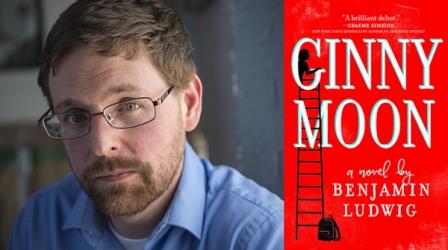
Today I’m welcoming Benjamin Ludwig to Buried Under Books as part of his blog tour celebrating the publication of his debut novel, ‘Ginny Moon’.
‘Ginny Moon’ is a tender, often deeply sad story and Ginny herself¬†is a vividly realised character who can behave in deeply frustrating ways. Her first person narration is essential for helping readers to understand how her mind works and why she is so desperate to risk everything to return to a dangerous environment – her birth mother’s flat.
Want to know more? Here’s the blurb:
Ginny Moon‘s painfully honest narrator is Ginny, a girl with autism living in a world that just doesn‚Äôt add up. Five years ago the police forcibly removed her from the home of her abusive mother Gloria.
Now fourteen and in her 4th Forever Home, Ginny is hell-bent on returning to her mother’s apartment ‚Äď despite knowing how dangerous that could be ‚Äď to find something she insists she hid under the bed.
Ginny will steal, lie, plan her own kidnapping and tear apart every shred of the normal, stable life she currently has, just to find what she left at the farthest edge of forever…
Sounds intriguing, doesn’t it? I thoroughly enjoyed this book – although I often wanted to shake Ginny! The ending left me breathless. We hover so close to a very different ending; it gave me chills and lingered in my mind long after I closed the pages.
Now we all know that writers begin as readers, and all readers, from the most reluctant to the most advanced, can be helped to discover new horizons by thoughtful teachers. Benjamin Ludwig knows this perhaps better than most, since he has taught adults and children for twenty years.
Over to Benjamin to tell you about some of his favourite books to teach – and his favourite tasks to set from them!
Teaching English has been the best thing that ever could have happened to me as a writer.¬† For one thing, teaching exposes me to stories ‚Äď not only written stories, but tales told in the hallway as well.¬† Kids are always gossiping, and so are teachers!¬† A school is a place where people come not only to learn, but to socialize.¬† We share our stories with one another, and in doing so share our lives.
Of course, as an English teacher I was always on the hunt for new books and stories to use in the classroom.¬† ‚ÄúA book is a tool to think with,‚ÄĚ says I.A. Richards, and I learned a long time ago that finding just the right text can mean the difference between students understanding a new idea or not understanding it at all.¬† Here are some of my favourites.
 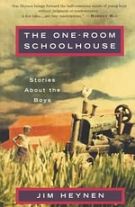
1.         Jim Heynen’s The One Room Schoolhouse: Stories about the Boys
Jim Heynen‚Äôs book of short-short stories changed the way I look at literature.¬† The opening piece in the collection, titled ‚ÄúWhat Happened During the Ice Storm‚ÄĚ is a master-lesson in imagery.¬† By repeating a series of images and drawing parallels between them, Heynen leads readers to an inescapable ‚Äď but indirect ‚Äď conclusion.¬†¬† A fun exercise that I‚Äôve often used with students after they‚Äôve read the story is to have them imitate the technique.¬† ‚ÄúDescribe an object, and then describe a character using similar terms and images,‚ÄĚ the assignment begins.¬† ‚ÄúUse the similarities to suggest traits or qualities in the character, without naming the character‚Äôs actual emotions or intentions.‚ÄĚ
 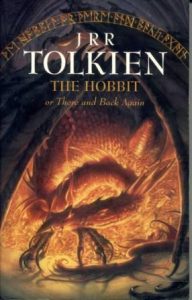
2.         The Hobbit, by JRR Tolkien
The Hobbit is perfectly suited for middle-grade readers.¬† One of the things that makes it so charming is Tolkien‚Äôs use of direct-address, in which he speaks directly to the reader, assuming the narrative style of an oral storyteller.¬† I‚Äôve often read students a passage from the book (particularly in the opening chapter, which makes frequent use of the technique), and then asked students to ‚ÄúTake a scene that you‚Äôve written, and mimic Tolkien‚Äôs strategy of speaking directly to the reader. ¬†What is the difference in tone, when you ‚Äėspeak‚Äô to your readers?¬† How does it change the writing?‚ÄĚ
 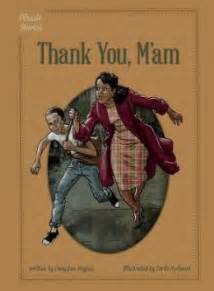
3.¬†¬†¬†¬†¬†¬†¬†¬† ‚ÄúThank You, Ma‚Äôam‚ÄĚ by Langston Hughes
A young boy is caught trying to steal a woman‚Äôs purse, and is brought home, fed, and instructed by the woman herself.¬† Aside from providing an edgy but humorous read, ‚ÄúThank You, Ma‚Äôam‚ÄĚ allows students to discuss the importance of surprising readers.¬† A corresponding exercise is to ‚ÄúWrite a short story in which a character does the opposite of what we might expect.‚Ä̬† In the past, I‚Äôve had students write about waiters who attempt to order food from customers; mail carriers who knock on the door asking for letters; and (my favorite) students who end up teaching their teachers.¬†
I have to admit that I’ve not actually read any of those books – but I’d definitely like to try the first and last books and the teacher in me loves the sound of the activities. (I tried Tolkien as a teenager and it just didn’t click for me. So far I haven’t felt inspired to try again, but maybe one day…*eyes teetering TBR pile dubiously*)
Many thanks to Benjamin for visiting Buried Under Books and sharing some of his thoughts.
Once again my review of a fantastic book has been stymied by half-term (too many exciting day trips to find time to blog!) but hopefully it’ll be up next week.
In the meantime, if you want to know more, you can buy the book (published 1st June) or follow the blog tour:
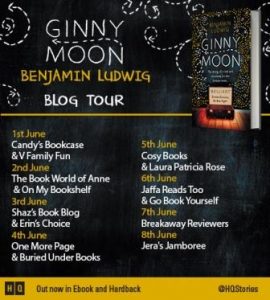
‘Ginny Moon’,
Benjamin Ludwig,
HQ, 2017, paperback
Many thanks to the publishers for providing me with a free copy of the book in exchange for an honest review / a place on the blog tour.